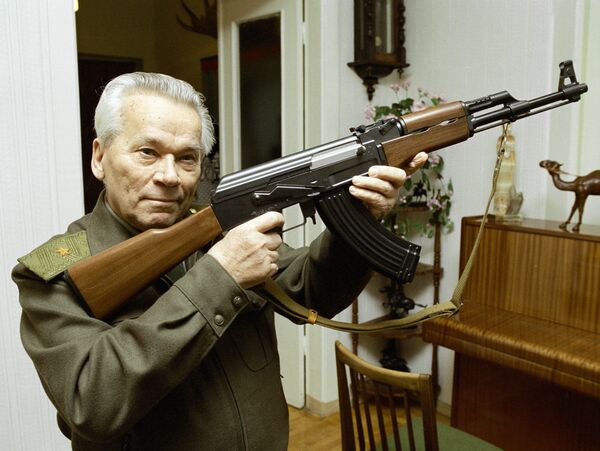The Russian armed forces will continue using firearms based on the assault rifle Mikhail Kalashnikov designed in 1947. Vladimir Gorodetsky, director of the Urals-based Izhevsk Mechanical Plant (Izhmash), which produces the legendary assault rifles, told this to the media on May 25.
Next year, the Defense Ministry will start testing a new model of Kalashnikov, the AK-200. The new model is lighter than its predecessor and has a more ergonomic design. However, the total weight of the device will be 3.8 kg (up from 3.3 kg), due to additional equipment, including a scope sight and a target-marking laser.
Do these improvements meet the current needs of the Russian army, or modern fighting practices more broadly? To answer this question, one needs to study complaints made about the most widely used and distributed military firearm in history.
1. Lower precision in single shot fire compared to similar Western models and noticeable climb in fully automatic fire, especially with the 7.62 mm version.
2. Difficulty in installing modern scope sights.
3. Non-ergonomic handle.
4. Obsolete open-barrel sight.
Most of the precision problems in basic AK models have been resolved by improving the quality of mass-produced rifles and ammunition, analysts say. Sometimes there can be a great difference between different Kalashnikovs of the same model but made by different producers in different countries because of production quality, components and ammunition.
As for the climb and recoil problems, they stem from details in the design itself; correcting those would require structural improvements, at least as significant as in the AK 107/108 versions, where the recoil is weaker due to its more balanced automatic mechanism. Such changes would eventually require designers to generate a whole new design concept for the firearm, which is impossible in the current economic situation.
Another option would be to use new recoil control devices (compensators).
The difficulty of installing scopes is due to the receiver cover's design: optical sights cannot be attached to it. The sights, fitted with a Picatinny attachment, would need to be adjusted whenever the cover is lifted or replaced.
Until recently, the sights were fitted to Kalashnikovs using a bracket on the left side of the receiver, significantly limiting the range of sights that could be used. The Picatinny gas tube attachment was introduced for the AK-200 series to solve this problem and the receiver cover was also improved. It is hinged to the receiver at the front and flips up, increasing its overall rigidity. Picatinny rails compatible with a range of optical and collimator sights can be installed on the rigid receiver.
Many professionals recognize the Kalashnikov's original open barrel sight as obsolete. Other experts argue that it is quite effective in open combat and only requires minor improvements.
Overall, the AK-200 series is a significant upgrade of the basic rifle, and the improvements made have not required a dramatic upgrade in production lines.
Russia's Interior Ministry and Federal Security Service are already buying small batches of new series firearms. Commercial production has to wait until the Defense Ministry's tests are complete. If the AK-200 goes into production, it would mean Russia joining the international trend towards improving existing models rather than re-inventing "the firearms of tomorrow," which saw only limited progress. Basic models can be upgraded by ergonomic design and added cutting-edge equipment.
Russia is in a better position than other countries as it escaped all those "firearms of tomorrow" projects thanks to events of the past 20 years.
The opinions expressed in this article are the author's and do not necessarily represent those of RIA Novosti.
MOSCOW. (Ilya Kramnik, RIA Novosti military commentator)

